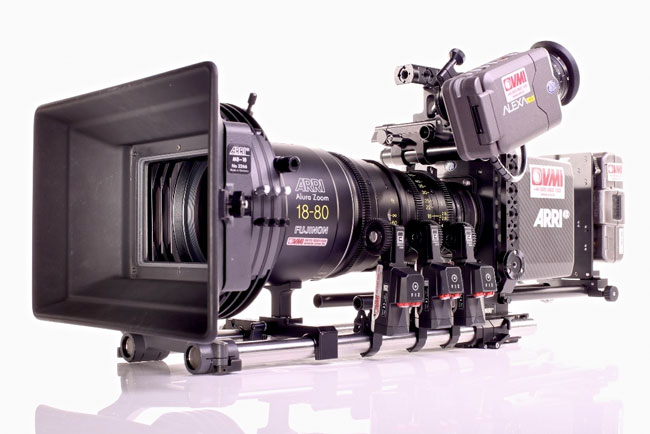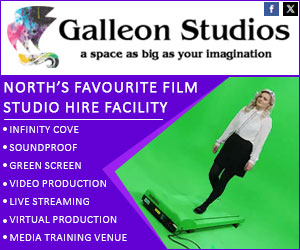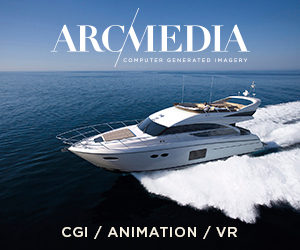Broadcast News
30/03/2016
ALEXA Mini Or Amira?

With the introduction of the ALEXA Mini, ARRI have created a camera that addresses a very recent shift in camera requirement for some productions with the proliferation of gimbal rig and drone shots that still demand high end acquisition. This sector has been the domain of RED cameras ever since the introduction of the RED EPIC and SCARLET due to the weight, small form factor and the ability to record in 4K, and the Mini is essentially ARRI's way of packaging an ALEXA to be able to be used in a similar way.
The ARRI AMIRA was introduced about two years ago again as a means to provide ALEXA quality and performance in a smaller more documentary shape and size camera.
This is a short article to highlight the differences and similarities between the two cameras in order to assist VMI clients in making sensible and informed choices about which system would be most suitable for a given project.
"The AMIRA and the MINI are pitched at different working practices and both provide elegant solutions within that and it will be the project you are embarking on that should guide you towards the correct system for you rather than a desire to just use the 'latest' version because it's there," said Ian Jackson, Assoc. BSC.
Comparison of full-configured Amira, Mini & Alexa
Physically the camera bodies are very different from each other because they are designed for different purposes. The AMIRA body is 310mm (approx. 1 foot) long and weighs 4.1kg without any added accessories. The actual shooting dimensions depend on the accessories attached but with batteries, TV logic monitor and Canon 17-120mm zoom with clip on matte box.
Fully Configured Amira Package. 68cm length, 12.45kg
The length is 68cm and the weight is 12.45kg. However the AMIRA is designed for hand held use and so has some clever features to help the operator 'tune' the balance of the camera so the weight is comfortably on the shoulder whilst the viewfinder is in the correct place for the eye. The actual weight is broadly irrelevant as long as the balance of the camera on the shoulder is neutral, i.e. the weight not being supported by the hands and elbows of the operator.
The headline basic weight of the carbon fibre bodied ALEXA MINI is 2.3kg and it is 185mm long, which is remarkable considering the recording capabilities of the camera, and yet, the Mini is designed for gimbal and drone work and not hand held shots. It can of course be accessorised to become a balanced hand held camera like the AMIRA but that involves the use of a cage system, extra battery outputs and handle kits. So therefore by adding the same kit as the AMIRA above, whilst again 'tuning' the accessories to help with the balance, the actual working length is 78cm and the working weight is 12.5kg.
Fully Configured Alexa Mini 78cm long, 12.5kg
One of the main issues with the MINI is providing power for accessories as the on board power out options are very limited, this involves a bar mounted battery plate which can supply either D-Tap or RS outputs. As the MINI CFast card slots are at the rear of the body, any battery plate has to be sufficiently distant from the back of the camera to allow the operator sufficient space to be able to change cards. The drawback is that this necessarily extends the length of the camera but paradoxically the benefit of this arrangement means that the battery plate and batteries are placed away from the back of the camera body in order to assist with maintaining neutral balance with a lens like the Canon 17-120mm. Therefore for a given set of accessories, the AMIRA and ALEXA MINI pretty much weigh the same but the ALEXA MINI is 10cm longer when configured for comfortable and balanced hand held use ( the additional battery is used is a counterbalance as there is no actual real weight in the body-and a Dionic HC weighs 700g approx).
If your project is mainly hand held, run and gun etc. then the AMIRA is your best option, if you are shooting with gimbals etc. and have plenty of time to rig/de-rig then the MINI is the one for you.
For the sake of balance (pun intended), the figures for an ALEXA CLASSIC with the same kit package for comparison are length 70cm and weight 13.75kg. So the reality is that for most projects for most of the time then a standard Alexa will suffice.
Main Differences between the Mini and Amira
Technically there are some differences between the two cameras that we need highlight here along with a number of identical features.
Sensor
Sensor wise the AMIRA has a 16:9 super 35mm chip capable of delivering HD, 2K and (up-res'ed) 4K UHD 3840x2160 to a maximum recording codec of ProRes 4444XQ. The maximum fps in HD recording is 200fps and 30fps in UHD 4K (ProRes 4444XQ). The AMIRA also offers the capability to adjust knee, gamma, saturation, black gamma, saturation by hue and ASC CDL parameters and is able to import custom LUTs as .AML files.
Shooting Anamorphic – Mini only
The ALEXA MINI in contrast has a 4:3 sensor which gives it (or will do by April 2016) the capability to use 2x squeeze anamorphic lenses. Additionally, and unlike the AMIRA, it has the ability to record in both 16:9 and Open Gate ARRIRAW (2.8 and 3.4K respectively) for the ultimate quality of recording similar to that of ALEXA SXT/XT. All other ProRes codecs from HD, 2K etc. are supported by the MINI and it will achieve similar frame rates to that of the AMIRA. The MINI also provides the same gamma, knee etc. adjustments as the AMIRA along with the ability to import 3D LUTS as .AML files. Both cameras offer REC709 and LogC colour gamut with 14 stops of latitude in LogC and both record internally to CFast 2 media which includes the ARRIRAW format on the MINI.
Real World Functionality
The third aspect to discuss is perhaps the most important as we look at real world functionality. Both cameras have interchangeable lens mounts so can accept PL, EF or B4 type lenses, however it is only the MINI that has a 4:3 sensor capable of working with anamorphic lenses. Both cameras also have adjustable electronic shutters from 5 to 356 degrees. Both cameras will accept 15 and 19mm based base plate systems and both of their shoulder supports are designed as quick release VCT plates as well.
The AMIRA is a balanced, relatively lightweight camera equally at home on the shoulder or on a tripod that is ready to use straight out of the box. Its versatility is improved by being provided with a choice of 15mm or 19mm bridge plate configurations and also a lightweight camera top or cheese plate, which allows the same camera to be used in a lightweight documentary style or in a fully-accessorised drama-type arrangement with easy substitution of these key items – a luxury not afforded to Mini users.
Amira has four proper XLR sound inputs recording at 24 bit PCM with a sound level monitoring panel and a headphone monitoring mini-jack socket. The AMIRA has a 12 pin Hi-Rose output to interface with ENG style lenses like the Canon 17-120mm along with 24v RS and 12v Lemo 2pin power outputs. There are several assignable shortcut buttons and the main user menu interface is on a small monitor that is part of the viewfinder assembly.
The AMIRA also features a set of built in IRNDS up to a maximum of 2.1 (seven stops of exposure control) and has two HDSDI monitoring outputs. The AMIRA does not have any built in wireless LCS functionality and so if the project involves using an ARRI WCU4 wireless system then the AMIRA will need to carry the small additional weight of the UMC4 receiver to work with CLM4 motors or the negligible weight of the AMC1 box which will interface with the smaller ARRI CForce motors.
The MINI has to be thought of as a modular camera system that can provide elegant solutions in certain circumstances. At heart it is a small, lightweight carbon fibre box containing a well known and loved sensor and lots of electronics and nothing else. So to turn it into something usable there has to be a building process, firstly to attach the cage accessories that will then allow the other accessories such as the viewfinder, battery and lens control motors to be attached.
This procedure will inevitably take some time to achieve and that will depend on the complexity of the build as certainly for gimbal work the idea would be to keep the weight to a minimum. In all but the previous circumstances, the footprint of a fully functioning MINI is about the same as both an AMIRA and an ALEXA but it presents a couple of challenges when compared to the other systems.
Firstly, the main user menu interface is contained on a screen within the viewfinder housing but if you are not using the viewfinder in an effort to keep the weight down then you have lost the ability to control the camera.
There are two alternatives in this instance, the MINI is supplied with a small Transvideo Starlight touchscreen monitor which provides some limited control over the main parameters such as fps, colour temperature, ISO and shutter angle but the most elegant solution is to use the WCU4 hand unit which can now offer all adjustments via wireless to the MINI. Secondly there is very limited functionality in terms of input and output plugs which has to be addressed by adding third party accessories and battery power and the ability to record sound on board is not really a viable option as the socket provided is non-standard.
The MINI does however contain the same built in IRND filter system as the AMIRA which also means that the operator can use exposure control filters without the added weight of a matte box if necessary. Where the MINI excels however is when it is partnered with the WCU4 lens control system. Not only does the handset offer the full menu functionality, but the MINI has the wireless receiver for the lens control built into the main body which means no extra weight or power requirements for an external 'brain'. ARRI have created special, lightweight CForce motors that plug in directly to the MINI body and offer control for focus, iris and zoom and in terms of use on gimbals and drones or in confined environments, this is the MINI's USP.
Conclusion
Neither camera system offers any increase in image quality over a standard ALEXA as all cameras share variations on the same ALEV III sensor and no ARRI cameras currently offer true 4K, only the upscaling options previously mentioned. That said, the ALEXA family of cameras have been by far the most popular choice of high end acquisition for the past six years and with good reason as the image quality and real world functionality as a workable package are still second to none.
The AMIRA and MINI are derivations on the original physical form but do not vary particularly from the innovative ALEXA look so again for a large percentage of projects an ALEXA will serve just as well as an AMIRA or a MINI.
The AMIRA and the MINI are pitched at different working practices and both provide elegant solutions within that and it will be the project you are embarking on that should guide you towards the correct system for you rather than a desire to just use the 'latest' version because it's there. In conclusion, below are a few basic parameters that may guide you towards the system you require and of course VMI rental staff are on hand to help discuss your needs.
• I'm shooting HD at ProRes 4444 – AMIRA/ALEXA
• I'm shooting mainly on a drone – MINI
• I'm shooting mainly hand held – AMIRA/ALEXA
• I'm shooting on a dolly with all the toys – AMIRA/ALEXA
• I'm shooting ProRes 4444XQ – AMIRA/MINI
• I need a lightweight B Camera – MINI
• I'm shooting ARRIRAW – MINI
• I'm shooting with anamorphic lenses – MINI/ALEXA
• I need to record sound on board – AMIRA
• I'm shooting with an ENG style lens – AMIRA
Article by Ian Jackson (Assoc. BSC), March 2016, for VMI.
Image: A fully configured Alexa Mini Camera.
vmi.tv
The ARRI AMIRA was introduced about two years ago again as a means to provide ALEXA quality and performance in a smaller more documentary shape and size camera.
This is a short article to highlight the differences and similarities between the two cameras in order to assist VMI clients in making sensible and informed choices about which system would be most suitable for a given project.
"The AMIRA and the MINI are pitched at different working practices and both provide elegant solutions within that and it will be the project you are embarking on that should guide you towards the correct system for you rather than a desire to just use the 'latest' version because it's there," said Ian Jackson, Assoc. BSC.
Comparison of full-configured Amira, Mini & Alexa
Physically the camera bodies are very different from each other because they are designed for different purposes. The AMIRA body is 310mm (approx. 1 foot) long and weighs 4.1kg without any added accessories. The actual shooting dimensions depend on the accessories attached but with batteries, TV logic monitor and Canon 17-120mm zoom with clip on matte box.
Fully Configured Amira Package. 68cm length, 12.45kg
The length is 68cm and the weight is 12.45kg. However the AMIRA is designed for hand held use and so has some clever features to help the operator 'tune' the balance of the camera so the weight is comfortably on the shoulder whilst the viewfinder is in the correct place for the eye. The actual weight is broadly irrelevant as long as the balance of the camera on the shoulder is neutral, i.e. the weight not being supported by the hands and elbows of the operator.
The headline basic weight of the carbon fibre bodied ALEXA MINI is 2.3kg and it is 185mm long, which is remarkable considering the recording capabilities of the camera, and yet, the Mini is designed for gimbal and drone work and not hand held shots. It can of course be accessorised to become a balanced hand held camera like the AMIRA but that involves the use of a cage system, extra battery outputs and handle kits. So therefore by adding the same kit as the AMIRA above, whilst again 'tuning' the accessories to help with the balance, the actual working length is 78cm and the working weight is 12.5kg.
Fully Configured Alexa Mini 78cm long, 12.5kg
One of the main issues with the MINI is providing power for accessories as the on board power out options are very limited, this involves a bar mounted battery plate which can supply either D-Tap or RS outputs. As the MINI CFast card slots are at the rear of the body, any battery plate has to be sufficiently distant from the back of the camera to allow the operator sufficient space to be able to change cards. The drawback is that this necessarily extends the length of the camera but paradoxically the benefit of this arrangement means that the battery plate and batteries are placed away from the back of the camera body in order to assist with maintaining neutral balance with a lens like the Canon 17-120mm. Therefore for a given set of accessories, the AMIRA and ALEXA MINI pretty much weigh the same but the ALEXA MINI is 10cm longer when configured for comfortable and balanced hand held use ( the additional battery is used is a counterbalance as there is no actual real weight in the body-and a Dionic HC weighs 700g approx).
If your project is mainly hand held, run and gun etc. then the AMIRA is your best option, if you are shooting with gimbals etc. and have plenty of time to rig/de-rig then the MINI is the one for you.
For the sake of balance (pun intended), the figures for an ALEXA CLASSIC with the same kit package for comparison are length 70cm and weight 13.75kg. So the reality is that for most projects for most of the time then a standard Alexa will suffice.
Main Differences between the Mini and Amira
Technically there are some differences between the two cameras that we need highlight here along with a number of identical features.
Sensor
Sensor wise the AMIRA has a 16:9 super 35mm chip capable of delivering HD, 2K and (up-res'ed) 4K UHD 3840x2160 to a maximum recording codec of ProRes 4444XQ. The maximum fps in HD recording is 200fps and 30fps in UHD 4K (ProRes 4444XQ). The AMIRA also offers the capability to adjust knee, gamma, saturation, black gamma, saturation by hue and ASC CDL parameters and is able to import custom LUTs as .AML files.
Shooting Anamorphic – Mini only
The ALEXA MINI in contrast has a 4:3 sensor which gives it (or will do by April 2016) the capability to use 2x squeeze anamorphic lenses. Additionally, and unlike the AMIRA, it has the ability to record in both 16:9 and Open Gate ARRIRAW (2.8 and 3.4K respectively) for the ultimate quality of recording similar to that of ALEXA SXT/XT. All other ProRes codecs from HD, 2K etc. are supported by the MINI and it will achieve similar frame rates to that of the AMIRA. The MINI also provides the same gamma, knee etc. adjustments as the AMIRA along with the ability to import 3D LUTS as .AML files. Both cameras offer REC709 and LogC colour gamut with 14 stops of latitude in LogC and both record internally to CFast 2 media which includes the ARRIRAW format on the MINI.
Real World Functionality
The third aspect to discuss is perhaps the most important as we look at real world functionality. Both cameras have interchangeable lens mounts so can accept PL, EF or B4 type lenses, however it is only the MINI that has a 4:3 sensor capable of working with anamorphic lenses. Both cameras also have adjustable electronic shutters from 5 to 356 degrees. Both cameras will accept 15 and 19mm based base plate systems and both of their shoulder supports are designed as quick release VCT plates as well.
The AMIRA is a balanced, relatively lightweight camera equally at home on the shoulder or on a tripod that is ready to use straight out of the box. Its versatility is improved by being provided with a choice of 15mm or 19mm bridge plate configurations and also a lightweight camera top or cheese plate, which allows the same camera to be used in a lightweight documentary style or in a fully-accessorised drama-type arrangement with easy substitution of these key items – a luxury not afforded to Mini users.
Amira has four proper XLR sound inputs recording at 24 bit PCM with a sound level monitoring panel and a headphone monitoring mini-jack socket. The AMIRA has a 12 pin Hi-Rose output to interface with ENG style lenses like the Canon 17-120mm along with 24v RS and 12v Lemo 2pin power outputs. There are several assignable shortcut buttons and the main user menu interface is on a small monitor that is part of the viewfinder assembly.
The AMIRA also features a set of built in IRNDS up to a maximum of 2.1 (seven stops of exposure control) and has two HDSDI monitoring outputs. The AMIRA does not have any built in wireless LCS functionality and so if the project involves using an ARRI WCU4 wireless system then the AMIRA will need to carry the small additional weight of the UMC4 receiver to work with CLM4 motors or the negligible weight of the AMC1 box which will interface with the smaller ARRI CForce motors.
The MINI has to be thought of as a modular camera system that can provide elegant solutions in certain circumstances. At heart it is a small, lightweight carbon fibre box containing a well known and loved sensor and lots of electronics and nothing else. So to turn it into something usable there has to be a building process, firstly to attach the cage accessories that will then allow the other accessories such as the viewfinder, battery and lens control motors to be attached.
This procedure will inevitably take some time to achieve and that will depend on the complexity of the build as certainly for gimbal work the idea would be to keep the weight to a minimum. In all but the previous circumstances, the footprint of a fully functioning MINI is about the same as both an AMIRA and an ALEXA but it presents a couple of challenges when compared to the other systems.
Firstly, the main user menu interface is contained on a screen within the viewfinder housing but if you are not using the viewfinder in an effort to keep the weight down then you have lost the ability to control the camera.
There are two alternatives in this instance, the MINI is supplied with a small Transvideo Starlight touchscreen monitor which provides some limited control over the main parameters such as fps, colour temperature, ISO and shutter angle but the most elegant solution is to use the WCU4 hand unit which can now offer all adjustments via wireless to the MINI. Secondly there is very limited functionality in terms of input and output plugs which has to be addressed by adding third party accessories and battery power and the ability to record sound on board is not really a viable option as the socket provided is non-standard.
The MINI does however contain the same built in IRND filter system as the AMIRA which also means that the operator can use exposure control filters without the added weight of a matte box if necessary. Where the MINI excels however is when it is partnered with the WCU4 lens control system. Not only does the handset offer the full menu functionality, but the MINI has the wireless receiver for the lens control built into the main body which means no extra weight or power requirements for an external 'brain'. ARRI have created special, lightweight CForce motors that plug in directly to the MINI body and offer control for focus, iris and zoom and in terms of use on gimbals and drones or in confined environments, this is the MINI's USP.
Conclusion
Neither camera system offers any increase in image quality over a standard ALEXA as all cameras share variations on the same ALEV III sensor and no ARRI cameras currently offer true 4K, only the upscaling options previously mentioned. That said, the ALEXA family of cameras have been by far the most popular choice of high end acquisition for the past six years and with good reason as the image quality and real world functionality as a workable package are still second to none.
The AMIRA and MINI are derivations on the original physical form but do not vary particularly from the innovative ALEXA look so again for a large percentage of projects an ALEXA will serve just as well as an AMIRA or a MINI.
The AMIRA and the MINI are pitched at different working practices and both provide elegant solutions within that and it will be the project you are embarking on that should guide you towards the correct system for you rather than a desire to just use the 'latest' version because it's there. In conclusion, below are a few basic parameters that may guide you towards the system you require and of course VMI rental staff are on hand to help discuss your needs.
• I'm shooting HD at ProRes 4444 – AMIRA/ALEXA
• I'm shooting mainly on a drone – MINI
• I'm shooting mainly hand held – AMIRA/ALEXA
• I'm shooting on a dolly with all the toys – AMIRA/ALEXA
• I'm shooting ProRes 4444XQ – AMIRA/MINI
• I need a lightweight B Camera – MINI
• I'm shooting ARRIRAW – MINI
• I'm shooting with anamorphic lenses – MINI/ALEXA
• I need to record sound on board – AMIRA
• I'm shooting with an ENG style lens – AMIRA
Article by Ian Jackson (Assoc. BSC), March 2016, for VMI.
Image: A fully configured Alexa Mini Camera.
vmi.tv
Useful Links
Top Related Stories
Click here for the latest broadcast news stories.
18/12/2024
Sonnet Offers Sneak Peek Of Three Professional Mounting Solutions
Sonnet Technologies has previewed the RackMac™ mini (2024+), DuoModo™ Mac mini® Module (2024+), and MacCuff™ mini (2024+), custom-designed mounting so
Sonnet Offers Sneak Peek Of Three Professional Mounting Solutions
Sonnet Technologies has previewed the RackMac™ mini (2024+), DuoModo™ Mac mini® Module (2024+), and MacCuff™ mini (2024+), custom-designed mounting so
09/02/2011
Sonnet's RackMac Mini Secures Two Mac Mini Servers In A 1U Rack Space
Sonnet Technologies has introduced its RackMac mini rackmount solution for the latest line of Mac mini servers and computers. Ideal for the office or
Sonnet's RackMac Mini Secures Two Mac Mini Servers In A 1U Rack Space
Sonnet Technologies has introduced its RackMac mini rackmount solution for the latest line of Mac mini servers and computers. Ideal for the office or
12/09/2019
ARRI ALEXA Mini LF To Begin Shipping
ARRI's new ALEXA Mini LF camera is set to begin shipping later this month. The company's quality control has approved the final production software, w
ARRI ALEXA Mini LF To Begin Shipping
ARRI's new ALEXA Mini LF camera is set to begin shipping later this month. The company's quality control has approved the final production software, w
12/06/2025
AJA Video Systems Unveils The DRM2-Plus
At InfoComm 2025, AJA Video Systems announced DRM2-Plus, an intuitive, high-capacity 3RU frame that can neatly house up to 24 AJA Mini-Converters. Tai
AJA Video Systems Unveils The DRM2-Plus
At InfoComm 2025, AJA Video Systems announced DRM2-Plus, an intuitive, high-capacity 3RU frame that can neatly house up to 24 AJA Mini-Converters. Tai
31/05/2019
New Version Of RackMac™ Mini 1U Rackmount Enclosure Launches
Sonnet has introduced new versions of its RackMac™ mini 1U rackmount enclosure and MacCuff™ mini security mounting bracket for Apple® Mac mini® comput
New Version Of RackMac™ Mini 1U Rackmount Enclosure Launches
Sonnet has introduced new versions of its RackMac™ mini 1U rackmount enclosure and MacCuff™ mini security mounting bracket for Apple® Mac mini® comput
03/08/2022
AJA Releases Mini-Config v2.26.4
AJA Video Systems has announced the launch of Mini-Config v2.26.4, a free software update for AJA's line of Mini-Converters covering a broad range of
AJA Releases Mini-Config v2.26.4
AJA Video Systems has announced the launch of Mini-Config v2.26.4, a free software update for AJA's line of Mini-Converters covering a broad range of
10/03/2025
Proton To Showcase Extended Mini Camera Range At NAB2025
Proton Camera Innovations will demonstrate its expanded range of mini cameras at NAB2025 (Booth N314), highlighting how its compact, high-performance
Proton To Showcase Extended Mini Camera Range At NAB2025
Proton Camera Innovations will demonstrate its expanded range of mini cameras at NAB2025 (Booth N314), highlighting how its compact, high-performance
14/02/2022
Dream Chip Releases AtomOne Mini Zoom Camera
Dream Chip has released its new AtomOne Mini Zoom camera, a ground-breaking miniature camera that now introduces Zoom functionality to an already impr
Dream Chip Releases AtomOne Mini Zoom Camera
Dream Chip has released its new AtomOne Mini Zoom camera, a ground-breaking miniature camera that now introduces Zoom functionality to an already impr
11/04/2016
Aerialworx: On Set With The ALEXA Mini
Set in the Highlands of Scotland, a horror film directed by director Gary Love and starring Sheila Hancock, tells the story of two lovers as they trav
Aerialworx: On Set With The ALEXA Mini
Set in the Highlands of Scotland, a horror film directed by director Gary Love and starring Sheila Hancock, tells the story of two lovers as they trav
11/03/2016
New Accessories For ARRI ALEXA Mini
ARRI have unveiled two new Pro Camera Accessories for its ALEXA Mini camera. They are a broadcast plate and a low bracket for shoulder operation. The
New Accessories For ARRI ALEXA Mini
ARRI have unveiled two new Pro Camera Accessories for its ALEXA Mini camera. They are a broadcast plate and a low bracket for shoulder operation. The
16/11/2015
Pro Motion Supplies ARRI ALEXA Mini For Music Video
Pro Motion Hire has supplied an ARRI ALEXA Mini camera for the recent shooting of a music video by the band Solomon Grey. The video, Twilight, will be
Pro Motion Supplies ARRI ALEXA Mini For Music Video
Pro Motion Hire has supplied an ARRI ALEXA Mini camera for the recent shooting of a music video by the band Solomon Grey. The video, Twilight, will be
05/03/2015
ARRI Launches ALEXA Mini At BVE
Visitors to this year's BVE show were treated to one of the biggest releases so far this year, the announcement that ARRI would be adding to its camer
ARRI Launches ALEXA Mini At BVE
Visitors to this year's BVE show were treated to one of the biggest releases so far this year, the announcement that ARRI would be adding to its camer
08/05/2014
Camera Corps Announces MeerCat Mini HD Cam
Camera Corps has announced a new addition to its range of speciality cameras; the MeerCat Miniature HD. Developed by the company in response to demand
Camera Corps Announces MeerCat Mini HD Cam
Camera Corps has announced a new addition to its range of speciality cameras; the MeerCat Miniature HD. Developed by the company in response to demand
20/05/2013
Camera Corps: PTZF Mini Joystick Version 3
Camera Corps (a Vitec Group company) announces the latest version of its ultra-compact PTZF Mini Joystick. Originally launched at the 2010 NAB Show in
Camera Corps: PTZF Mini Joystick Version 3
Camera Corps (a Vitec Group company) announces the latest version of its ultra-compact PTZF Mini Joystick. Originally launched at the 2010 NAB Show in
22/11/2004
VFGadgets introduces 'Hang N Shoot' mini DV camera car mount system
VFGadgets has announced the launch of its 'Hang N Shoot' mini DV camera car mount system developed by FTS (Film & Television Services) in Israel. This
VFGadgets introduces 'Hang N Shoot' mini DV camera car mount system
VFGadgets has announced the launch of its 'Hang N Shoot' mini DV camera car mount system developed by FTS (Film & Television Services) in Israel. This















